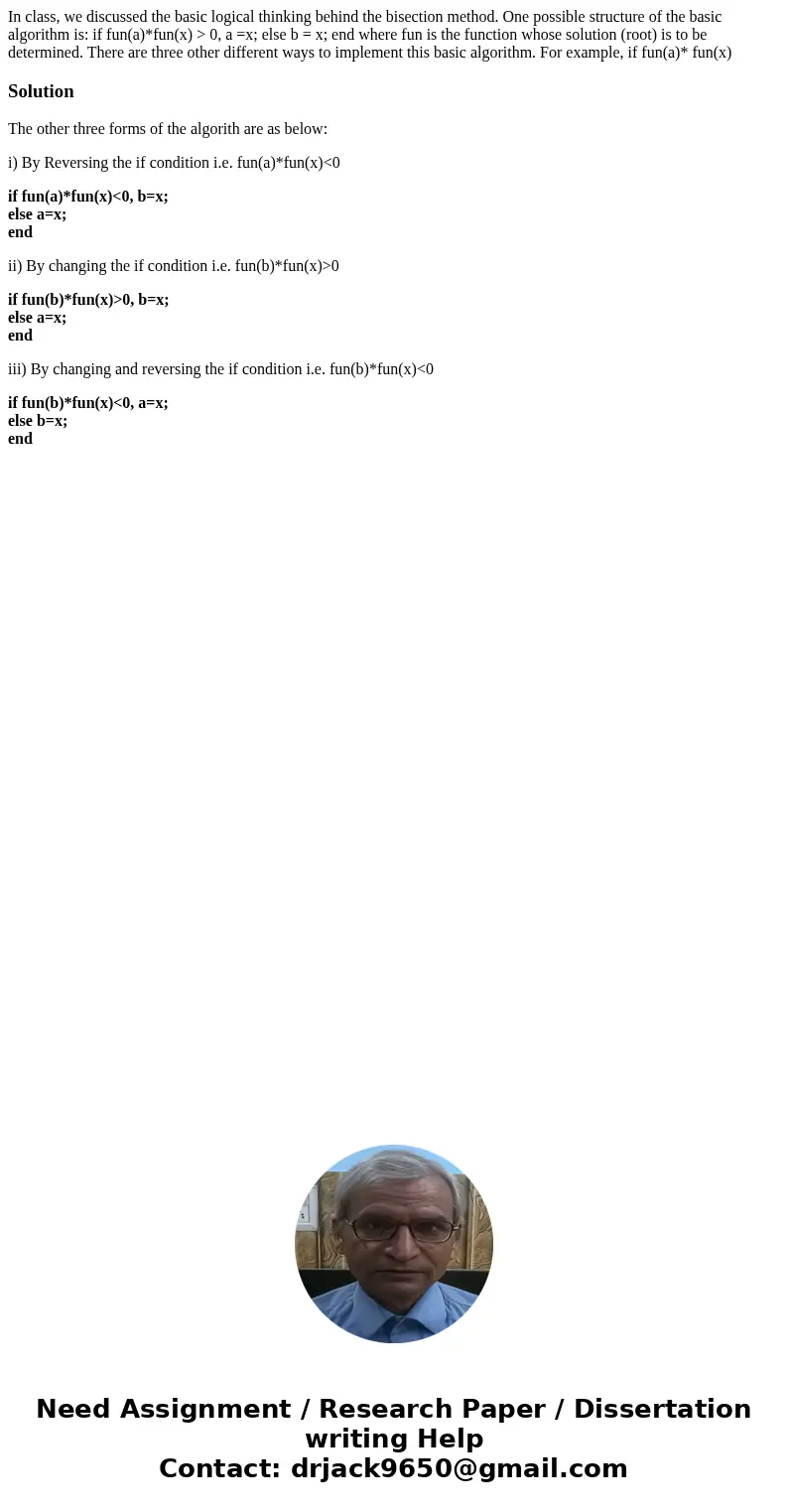In class we discussed the basic logical thinking behind the
In class, we discussed the basic logical thinking behind the bisection method. One possible structure of the basic algorithm is: if fun(a)*fun(x) > 0, a =x; else b = x; end where fun is the function whose solution (root) is to be determined. There are three other different ways to implement this basic algorithm. For example, if fun(a)* fun(x) 
Solution
The other three forms of the algorith are as below:
i) By Reversing the if condition i.e. fun(a)*fun(x)<0
if fun(a)*fun(x)<0, b=x;
else a=x;
end
ii) By changing the if condition i.e. fun(b)*fun(x)>0
if fun(b)*fun(x)>0, b=x;
else a=x;
end
iii) By changing and reversing the if condition i.e. fun(b)*fun(x)<0
if fun(b)*fun(x)<0, a=x;
else b=x;
end

 Homework Sourse
Homework Sourse